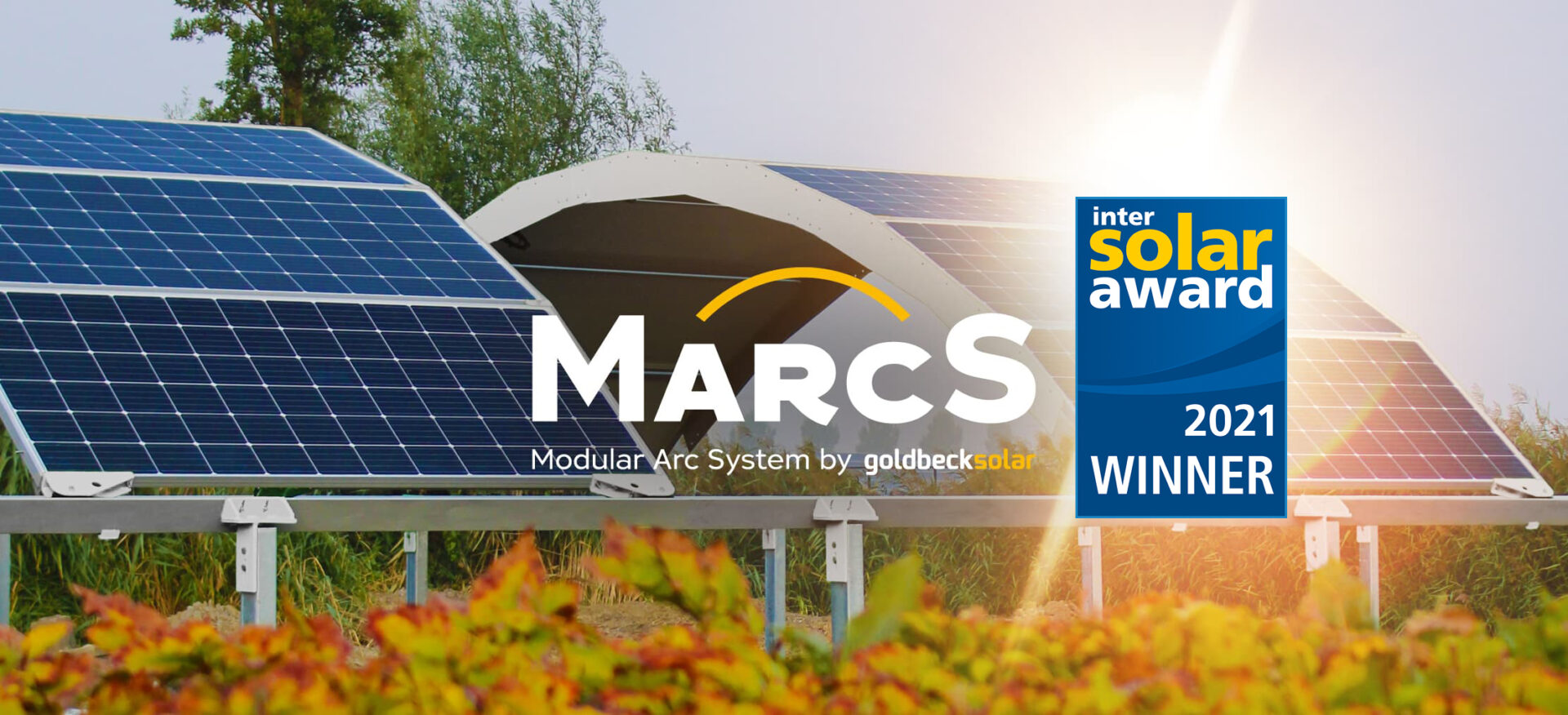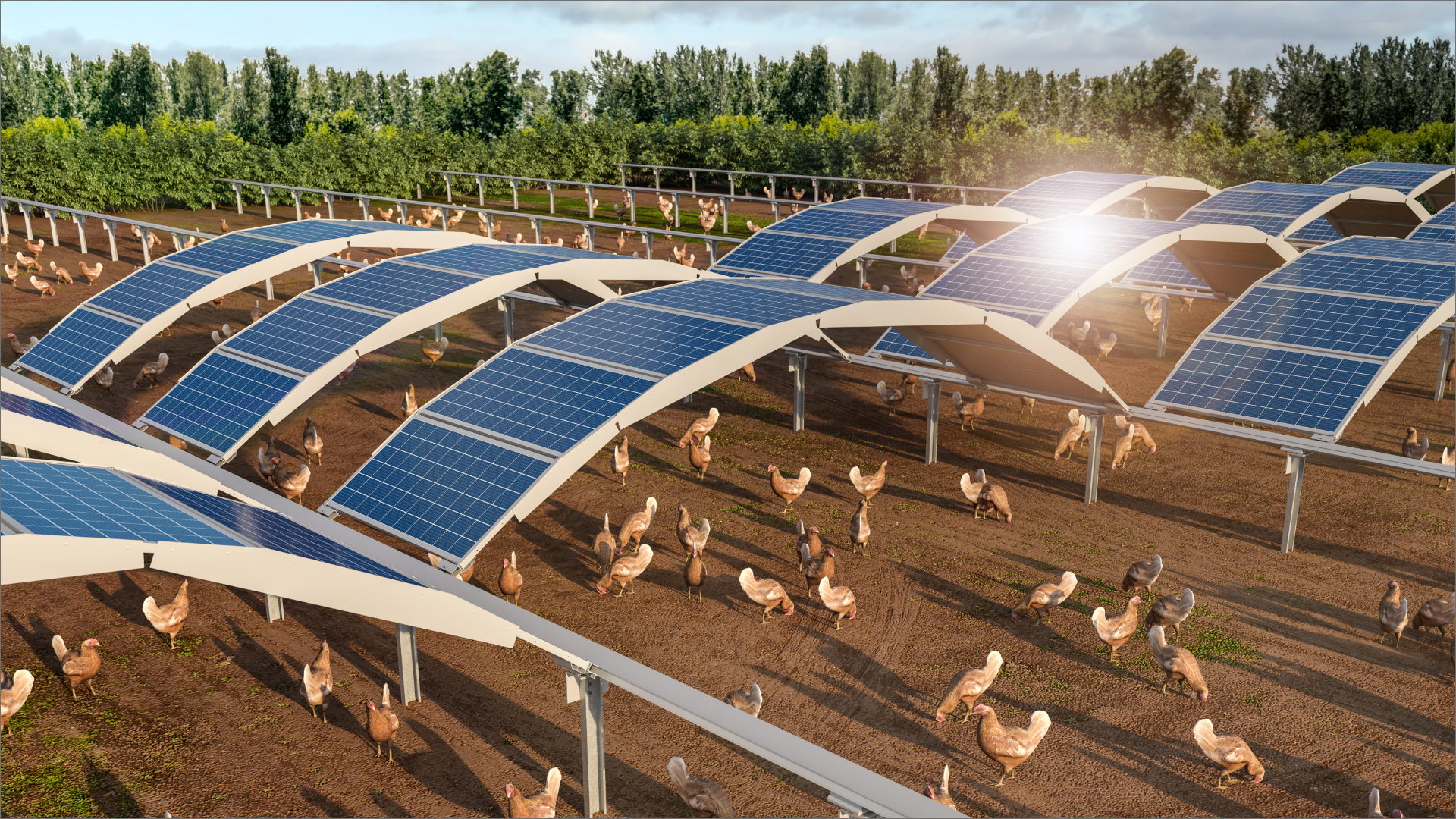

No results found.


How can agriculture and solar energy work together even more efficiently? In our innovation projects, we think photovoltaics outside of the box and break new ground. One of these research projects is MarcS. MarcS stands for Modular Arc System and opens up new perspectives on hybrid land use. The development was honored with the Inter Solar Award in 2021.
MarcS is a hybrid solution that combines agriculture and photovoltaics in a completely new way. The striking feature is its shape: The solar modules are arranged in arcs and are aligned to the east and west with different angles of inclination. This arched shape of the system means that the modules and substructure grow together to form a solid static part. Installed on a rail system, the solar modules can be moved flexibly. In this way, the design opens up new application possibilities for the system. For example, individual module sections can be extended with side walls to create greenhouses, storage facilities and other usage options.

| Shape | Bow |
|---|---|
| Orientation | East-West |
| Utilization | Multiple use/solar energy, agriculture, animal husbandry |
| Support column spacing | up to 9 metersdepending on the module size, a distance of one support pillar every 20 m2 possible |
| Surface efficiency | > 2 MWp / ha |
| Surface coverage | up to 100% |
| Height | 2.50 to 3.50 m |
| Energy production | up to 1.9 million kWh/ha/year in the the test environment in the Netherlands |
| Status | currently being tested in the Netherlands |

Installation on a rail system allows the modules to be moved flexibly.

The area under the modules can be used classically and as an Agri-PV solution can be cultivated, extended to create watertight rooms and used for livestock farming.

MarcS is characterized by a very high area output of more than 2 MWp/ha.

The area under the arches does not require any additional supports.

The MarcS system was developed together with farmers and is therefore particularly well suited to the needs of agriculture. As climate conditions change, agriculture must also think ahead. Extreme weather events such as heat, drought and heavy rain pose major challenges for livestock and farmers. Rising energy prices are putting pressure on companies. MarcS is an innovation project that aims to provide sustainable answers.
Agri-PV one step further.
Safety for crops and animals
Control of the harvest cycles
Additional source of income
